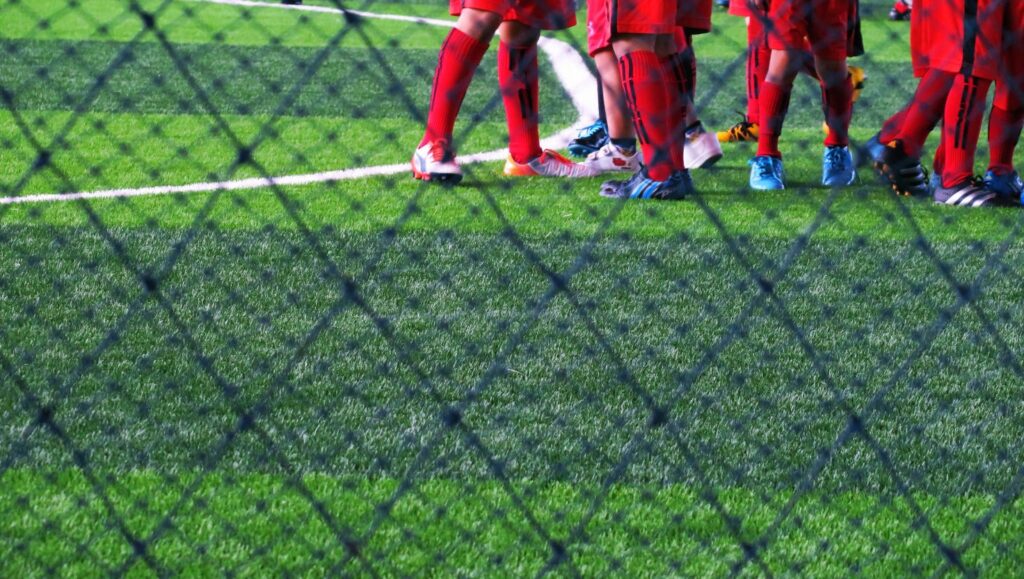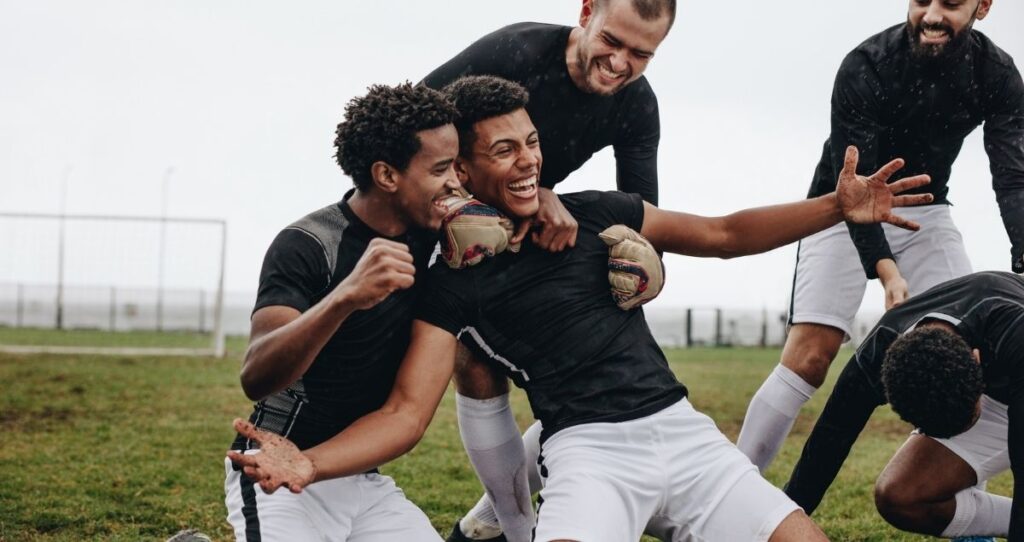Boost your betting experience and get up to $200 bonus right now!
FC Porto’s 2003-04 UEFA Champions League campaign remains one of the most stirring underdog stories in football history, something akin to a “David versus Goliath” tale at the highest stage. Led by José Mourinho, the enigmatic “Special One,” Porto defied expectations and powerhouses in Europe to lift the trophy for only the second time in the club’s history. This journey embodies the magic of football—the strategic battles, the heart-stopping moments, and the unrelenting spirit of a team determined to make history. Despite competing on a budget dwarfed by giants clad in New Balance, Nike, and Adidas kits, the Portuguese side orchestrated shockwaves that still echo in Champions League lore. It was not just the players but also a collective tactical intellect that shaped their path, cemented by iconic performances against multiple European heavyweights and a final that showcased tactical supremacy and raw passion. As we unfold this remarkable odyssey, it’s worth recognizing how this campaign signifies the heights a well-drilled, cohesive unit can reach, challenging major clubs often bankrolled by sponsors like Mastercard, Gazprom, and Pepsi.

The Tactical Genius Behind Porto’s Champions League Run
The foundation of Porto’s epic run was undeniably José Mourinho’s strategic genius. Taking charge midway through the 2001 season, Mourinho had already stamped his mark by winning the league, cup, and UEFA Cup in the subsequent season with Porto. But the Champions League demanded a different level of preparation, an advanced chess game among football’s elite. Mourinho’s philosophy blurred traditional training by integrating tactical drills with fitness and technical work, a forward-thinking approach known as ‘periodisation.’ It was this method that forged players fit both physically and mentally, enhancing their understanding of roles within the team’s rigid but flexible system.
Mourinho’s approach stood out for its simplicity and effectiveness. Unlike some coaches who chase glamour signings, he focused on a core group of trusted players — including Deco, Ricardo Carvalho, and the lethal Derlei — augmented by select signings like striker Benni McCarthy, who replaced Tottenham-bound Helder Postiga. This was a team with limited star power compared to usual Champions League giants adorned in Adidas or Nike kits, but each member knew their role to perfection. Mourinho’s mastery in scouting opponents, breaking down their weaknesses, and explosive counterstrategies became Porto’s secret weapon.
Key traits of Mourinho’s tactical blueprint included:
- High defensive line: Porto played with a coordinated and aggressive offside trap, often benefiting from controversial offside decisions—a tactic that caused confusion among even the best attack lines.
- Midfield engineering: Using a diamond midfield adorned by hardworking players such as Costinha and creative flair from Deco, Porto balanced defensive solidity with attacking verve.
- Adaptive pressing: The team combined pressing in opposition territory with smart possession, disrupting opponents’ rhythm and seizing early momentum.
- Flexible attack: Strikers like Derlei and Carlos Alberto were deployed with freedom, drifting wide or centrally as needed—making marking almost impossible for defenders.
These tactical choices, intertwined with shrewd game management, ensured Porto remained dangerous yet defensively resilient — a duality that proved crucial throughout their run, illustrated vividly in their encounters with giants like Real Madrid and Manchester United.
| Aspect | Description | Impact |
|---|---|---|
| High Defensive Line | Coordinated offside trap causing confusion and benefiting from decisions | Neutralized opposition attacks, leveraged defensive speed and positioning |
| Diamond Midfield | Balanced creative attack and defensive coverage | Enabled key players like Deco to control play and break lines |
| Adaptive Pressing | Pressured opponents to disrupt build-up | Retained initiative and forced turnovers in dangerous areas |
| Flexible Attack | Forward players given positional freedom | Created unpredictability and multiple attacking outlets |

Overcoming Giants: Porto’s Group Stage Battles and Knockout Miracles
Porto’s group stage in the 2003-04 Champions League was a baptism by fire, pitting them against some of Europe’s footballing titans. Placed in a group featuring Real Madrid and Marseille, this phase laid the groundwork for their eventual triumph by testing their resilience and tactical discipline.
The opening match against Red Star Belgrade ended in a gritty 1-1 draw, a result that, while not spectacular, demonstrated Porto’s will to resist early blows. The following matches, including a memorable comeback 3-2 victory at Marseille, gave the team a confidence boost. This was not a team content to merely survive; they wanted to upset established orders.
Facing Real Madrid at home presented a bitter 3-1 defeat, yet Porto drew valuable lessons in adaptability—learning when to absorb pressure and when to spring forward with pace. Their determination to finish second invited crucial tactical shifts that increased their competitiveness in the knockout stages.
Entering the round of 16, the clash with Manchester United was seen by many as a mismatch. United, led by Sir Alex Ferguson and saturated with talents from sponsors like Nike and Adidas, seemed overwhelming. But Porto, backed by their fans and fueled by an unyielding spirit, delivered a shocking 2-1 victory in the first leg at Estádio do Dragão. Benni McCarthy was the hero with a brace, including an unforgettable towering header.
The nerve-racking return leg at Old Trafford was a tango of tension and tactical battling. Despite conceding first to a Paul Scholes strike, Porto held firm, even benefiting from a disallowed second goal for United that altered the game’s rhythm. Then came the climactic moment—a last-minute equalizer by Costinha sealed an aggregate victory that shocked football Europe.
- Group Stage Highlights: Draw against Red Star, comeback win at Marseille, defeat to Real Madrid but ultimate progression.
- Knockout Phase Upsets: Defeating Manchester United with tactical discipline and heart.
- Key Players: Benni McCarthy (goals), Costinha (crucial defensive midfield), Deco (creative engine).
- Support and Sponsorship: Porto’s relatively modest backing from sponsors like New Balance and Pepsi paled compared to giants, yet their spirit thrived on underdog status.
| Opponents | Result (Aggregate) | Significance |
|---|---|---|
| Red Star Belgrade | Draw (1-1) | Opened group stage with resilience |
| Marseille | Win (3-2) | Coming from behind win, vital morale boost |
| Real Madrid | Lost (3-1) | Learning experience |
| Manchester United | Win (3-3 with away goals) | Huge upset, elevated Mourinho’s reputation |
Defensive Fortitude: The Backbone of Porto’s European Success
Porto’s defensive record in their Champions League run was nothing short of heroic. At the heart of this steadfast backline was the dynamic centre-back partnership of Jorge Costa and Ricardo Carvalho. Jorge Costa, the commanding captain, embodied leadership with an aggressive and experienced presence, while the younger, quicker Carvalho brought calm composure and tactical intelligence.
Flanked by robust full-backs Nuno Valente and Paulo Ferreira, the defensive line formed one of the most cohesive units in Europe. Their synergy was inspired in part by José Mourinho’s rigorous training, characterized by collective pressing and intelligent high-line defense that confused opposing forwards, notably in knockout clashes.
It’s telling that Porto’s defense repeatedly benefited from favorable offside calls, a testament not to luck alone but to their precise execution of the offside trap. This aggressive defensive strategy is a precursor to tactics popularized in modern games, emphasizing spatial control and psychological pressure. Mourinho’s vision of a defense that was an active part of attacking play, rather than merely reactive, contributed to the team’s resilience and the ability to launch swift counterattacks.
- Strong Defensive Partnership: Jorge Costa and Ricardo Carvalho provided balance with contrasting yet complementary skills.
- High Defensive Line: Enabled tactical offside traps and compressed the space for adversaries.
- Flanks Covered with Energy: Full-backs Valente and Ferreira combined defense with overlapping runs.
- Modern Training Techniques: Integrated tactical and physical drills enhanced team chemistry and efficiency.
| Defensive Player | Role | Contribution |
|---|---|---|
| Jorge Costa | Captain, Central Defender | Leadership and aggressive marking |
| Ricardo Carvalho | Central Defender | Speed and tactical intelligence |
| Nuno Valente | Left Back | Defensive stability and support in attack |
| Paulo Ferreira | Right Back | Defensive cover and overlapping runs |

The Grand Finale: Porto’s Commanding Victory Against Monaco
The climax of Porto’s extraordinary journey was the Champions League final on May 26, 2004, held at the Arena AufSchalke in Gelsenkirchen, Germany. Facing AS Monaco, a strong side coached by Didier Deschamps, Porto executed a near-flawless game plan that bore the fruit of relentless preparation and tactical mastery.
Monaco adopted a more offensive diamond midfield intending to overwhelm, yet Porto’s disciplined trio of midfielders disrupted their rhythm. The match started nervously, with Monaco’s pacey Ludovic Giuly posing early threats, but a key injury to Giuly just before scoring opportunities swung momentum to Porto.
Porto’s first goal came unexpectedly from Carlos Alberto, a young Brazilian striker signed mid-season, who scored with an instinctive volley from a tricky bounce. This was followed by a wonderful team move involving Deco and Dmitri Alenichev, illustrating Porto’s attacking flexibility and creative excellence. Deco, often hailed as the team’s maestro, orchestrated much of the play, masterfully balancing attack and defense.
Sealing the deal, Alenichev scored a powerful third goal, exploiting the space left by Monaco’s desperate attacking pushes. The 3-0 victory was not just a scoreline but a statement — Porto had dismantled a superior opponent through preparation, unity, and tactical intelligence.
- Key Moments: Injury to Monaco’s Giuly, early control by Porto, clutch goals by Carlos Alberto, Deco, and Alenichev.
- Strategic Flexibility: Switching players mid-game to outwit Monaco’s shape.
- Tactical Discipline: Pressing Monaco’s playmakers effectively and controlling the ball.
- Significance: Cemented Porto’s status among Europe’s elite, a triumph of perseverance over wealth.
| Goal Scorer | Minute | Goal Description |
|---|---|---|
| Carlos Alberto | 44′ | Instinctive volley following a bouncing cross |
| Deco | 71′ | Cut-back finish after a team build-up |
| Dmitri Alenichev | 87′ | Powerful shot exploiting defensive gaps |
Legacy and Lessons from Porto’s Unforgettable Champions League Triumph
Porto’s 2004 Champions League victory did more than just add a trophy to their cabinet—it challenged the very narrative that only clubs backed by giants like Santander, Mastercard, or PlayStation-sponsored glories could dominate Europe’s elite competition. Their legacy lies in shattering the financial hierarchy that invests heavily in many football powerhouses. The triumph illustrated how unity, tactical brilliance, and mental resilience can overcome the vast resources of the sport’s giants.
Teams looking to replicate Porto’s success can draw several lessons:
- Belief feeds performance: Porto’s players showed unwavering faith in Mourinho’s plans and their own abilities, even in hostile environments like Old Trafford.
- Smart recruitment: Strategic acquisitions like Benni McCarthy and nurturing talents like Deco maximized potential without extravagant spending.
- Tactical adaptability: Flexibility in formations and strategic in-game changes kept opponents off-balance.
- Team cohesion: A united squad that doubled as friends off the pitch provided the psychological edge in tight matches.
- Innovative training: Integrated fitness and tactical drills prepared them both physically and mentally for the rigors of Champions League football.
Porto’s journey also invites reflection on the wider football landscape. As European leagues continue their battles, with stories unfolding from domestic leagues to mega clubs rebuilding identities—like those discussed in extensive pieces on the PSG rebuilding identity or in the contrasts between long-ball vertical football and creative possession styles—Porto’s 2004 campaign remains a beacon of hope and inspiration for clubs outside the financial elite.
For further insightful narratives about football’s rich tapestry, enthusiasts can explore reports on Europe’s top leagues, football society case studies, or immerse themselves in the world of jaw-dropping football comebacks. Porto’s story is a timeless reminder: football is not just a game of budgets but a game of hearts, minds, and moments that refuse to fade.
Join today and grab up to $200 bonus for your next bets!
Content assisted by AI. This article was created in whole or in part with the help of artificial intelligence.